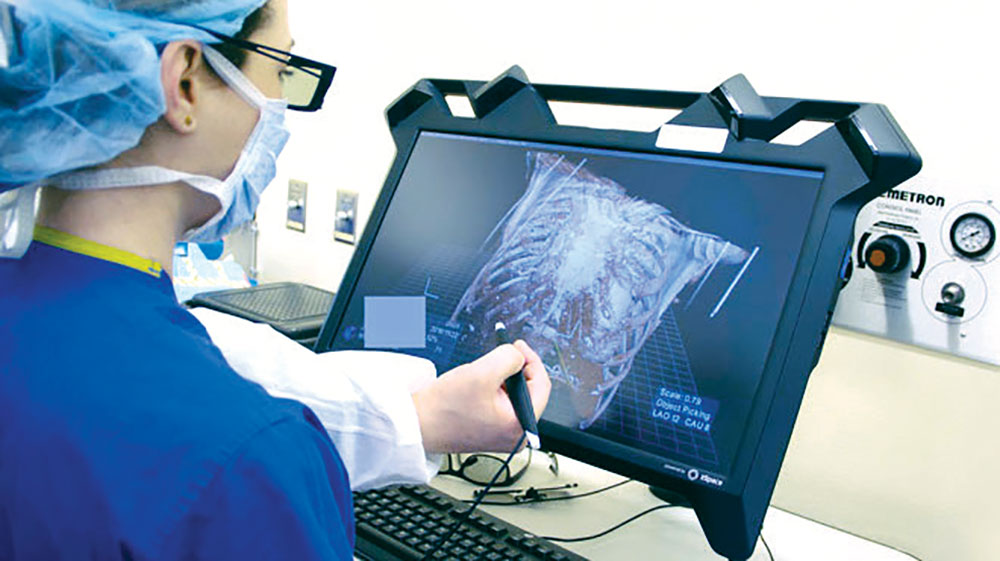


Companies leverage many years of experience in the simulation industry to create products that are of the highest quality. Cyber Science 3D specializes in development and delivery of simulation technologies and simulators for education, military, medical, and training industries. Cause and effect simulations allow users to learn or train at their own pace, which is the essence of our products.
#Zspace cyber science 3d full#
Cyber Science 3D provides a unique, immersive, and visual experience that allows educational institutions, government, or businesses to observe and interact with high fidelity models of structures in full 3D for all kinds of learning and training applications. Cyber-Anatomy video from YouTube.Cyber Science 3D is a comprehensive package of detailed, interactive virtual reality experiences focus on aiding in learning and exploration of natural phenomena, biological concepts, physics, and mechanical systems as well as many more. Rich Lineback photo from University of Iowa Center for Computer Aided Design. Watch Cyber-Anatomy technology in action through this video overview of the product:Ĭredits: Product photo from. “Basically, people can get one unit for much, much cheaper than they could get one cadaver,” he said.

Lineback says another draw is Cyber-Anatomy’s price tag––cadavers are expensive and so is maintaining labs to support them––since virtual cadavers don’t need to be replaced or stored. The main difference is the level of interaction or the immediacy of the object. With head-tracking glasses, a stylus and a display, students can manipulate objects like they could with Cyber-Anatomy’s other products.

“It works to either replace cadaver training or to augment it because there are many things you can do better on a workstation than you can do with a cadaver,” Lineback said. When connected with the zSpace platform, Cyber-Anatomy users receive an authentic first-person experience while interacting with anatomical images. Now, with the help of zSpace’s 3D holographic hardware, Cyber-Anatomy is jumping off the projectors and into students’ hands. The now 12-person team then released Cyber-Science 3D, which included lab assistance and virtual dissections for biology classrooms at the high school and undergraduate level––no need to worry about handling a formaldehyde-soaked frog or fetal pig anymore.
#Zspace cyber science 3d software#
The software quickly grew in popularity, showing up in classrooms in 25 medical schools internationally, including Harvard University, Stanford University and the University of Chicago. “Whereas in a classroom you would have a 3D whiteboard or a 3D projector that would show our images, the zSpace device allows the user to sit in front of it with a stylus and really immerse themselves in the dissection experience,” Lineback (right) said.Īfter years of meticulously mapping systems of the human body, Cyber-Anatomy released its first product, Cyber-Anatomy Med. The 3D software allows instructors and students to interact with elements of the human body––rotating, peeling and dissecting––without getting their hands dirty. While Lineback admits there’s “no real substitute” for lab work on a physical cadaver, he notes the virtual interaction has its advantages. In accordance with Islamic religious customs, many Muslims believe in burying the dead within the first 24 hours, meaning that medical instructors sometimes must import cadavers. Born in Egypt and raised in Jordan, Malek––now the director of the University of Iowa’s Center for Computer Aided Design––understood all too well the difficulties many Middle Eastern medical instructors face when it comes to obtaining cadavers. Lineback said he’s excited about the collaboration between the two groups and that a full release of the new product is planned for later this month.Ĭyber-Anatomy was founded in 2006 by Karim Malek as a project to create realistic, virtual cadavers for Middle Eastern medical schools. “In this case, it was very exciting for a high-tech company from the Silicon Valley to reach out to an Iowa company because of the technology that we had developed,” said Cyber-Anatomy president Rich Lineback of zSpace’s involvement. Iowa City-based Cyber-Anatomy, which creates interactive 3D anatomical models, recently partnered with zSpace, a holographic computing company from Sunnyvale, Calif., to create interactive, holographic images of human cadavers. Cyber-Anatomy Med uses 3D models to help instructors and students get a look inside the human body.


 0 kommentar(er)
0 kommentar(er)
